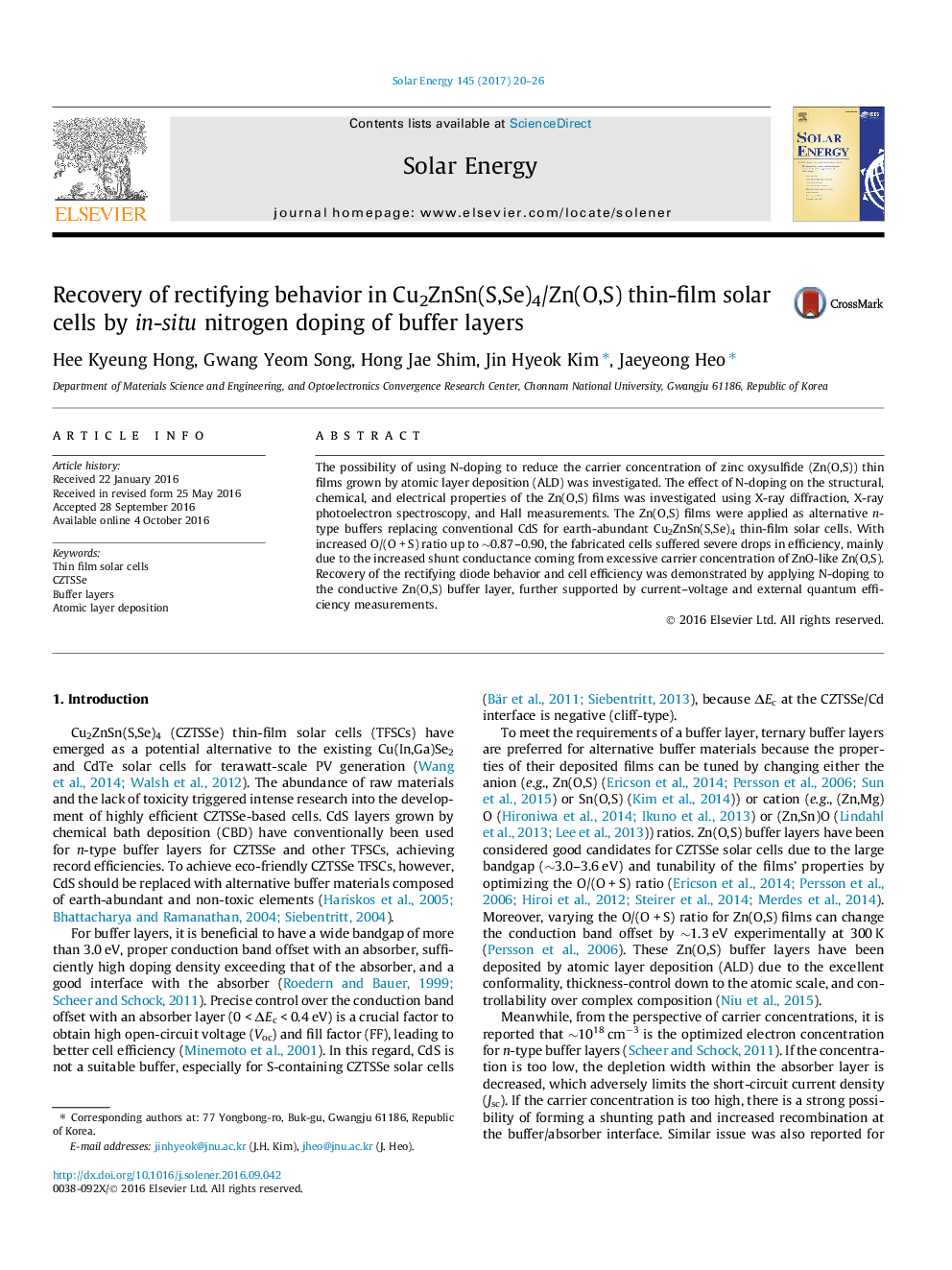| Article ID | Journal | Published Year | Pages | File Type |
|---|---|---|---|---|
| 5451001 | Solar Energy | 2017 | 7 Pages |
â¢CdS buffer layer for CZTSSe solar cells was replaced with ALD-Zn(O,S).â¢Nitrogen doping using NH4OH was used for the recovery of rectifying behavior.â¢The efficiency increased from 0.50% to 2.06% for the O/(O + S) ratio of â¼0.87-0.90.
The possibility of using N-doping to reduce the carrier concentration of zinc oxysulfide (Zn(O,S)) thin films grown by atomic layer deposition (ALD) was investigated. The effect of N-doping on the structural, chemical, and electrical properties of the Zn(O,S) films was investigated using X-ray diffraction, X-ray photoelectron spectroscopy, and Hall measurements. The Zn(O,S) films were applied as alternative n-type buffers replacing conventional CdS for earth-abundant Cu2ZnSn(S,Se)4 thin-film solar cells. With increased O/(OÂ +Â S) ratio up to â¼0.87-0.90, the fabricated cells suffered severe drops in efficiency, mainly due to the increased shunt conductance coming from excessive carrier concentration of ZnO-like Zn(O,S). Recovery of the rectifying diode behavior and cell efficiency was demonstrated by applying N-doping to the conductive Zn(O,S) buffer layer, further supported by current-voltage and external quantum efficiency measurements.
Graphical abstractDownload high-res image (98KB)Download full-size image
